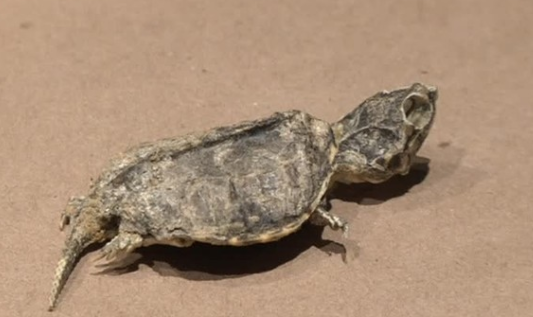
SALTILLO, Coahuila, Mexico (Reuters) — The fossilized remains of a turtle thought to be 65 million years old has been discovered in Mexico’s arid north, shedding new light into life into the once lush desert areas of Coahuila.
The turtle fossil dubbed the “Yelmochelis rosarioae” is one of the smallest animals to have roamed this ancient area, measuring just 10 centimeters (under 4 inches). Despite its size, the thickness of its shell and its ability to discharge secretions helped keep it safe from ancient enemies.
Mexican, Canadian and American scientists presented the discovery at an event in Saltillo’s acclaimed Desert Museum. The unusually well-preserved fossil allowed investigators to research the fossil and make comparisons to its living relatives in Mexico. The turtle reportedly once inhabited swamps of northern Mexico in the Mesozoic era, some 250 million years ago.
“Aside from being a small turtle, this turtle had it’s own defensive mechanisms such as the thickness of the bones on its shell and his ability to discharge secretions so as to scare his enemies. So this turtle was very successful given its small size and was abundant in its location in Mexico,” paleontologist Martha Carolina Aguillon said.
“We can look at the fossils and know how those fossils lived based on their living relatives. Also, turtles tend to be very abundant and they tend to be very diverse. So we can use them to look at quantitative facts and we can count the number of specimens, look at their relative abundance, look at changes, look at connections between different areas. So, they provide information that helps us overall understand the communities and the evolution of life at the time,” Researcher Donald Brinkman said.
Mexico’s Coahuila desert area is a prime stamping ground for palaeontologists in search of dinosaurs.
Due to the region’s diverse climatic factors such as erosion the discovery of fossils and other dinosaur remains is commonplace in the area.








